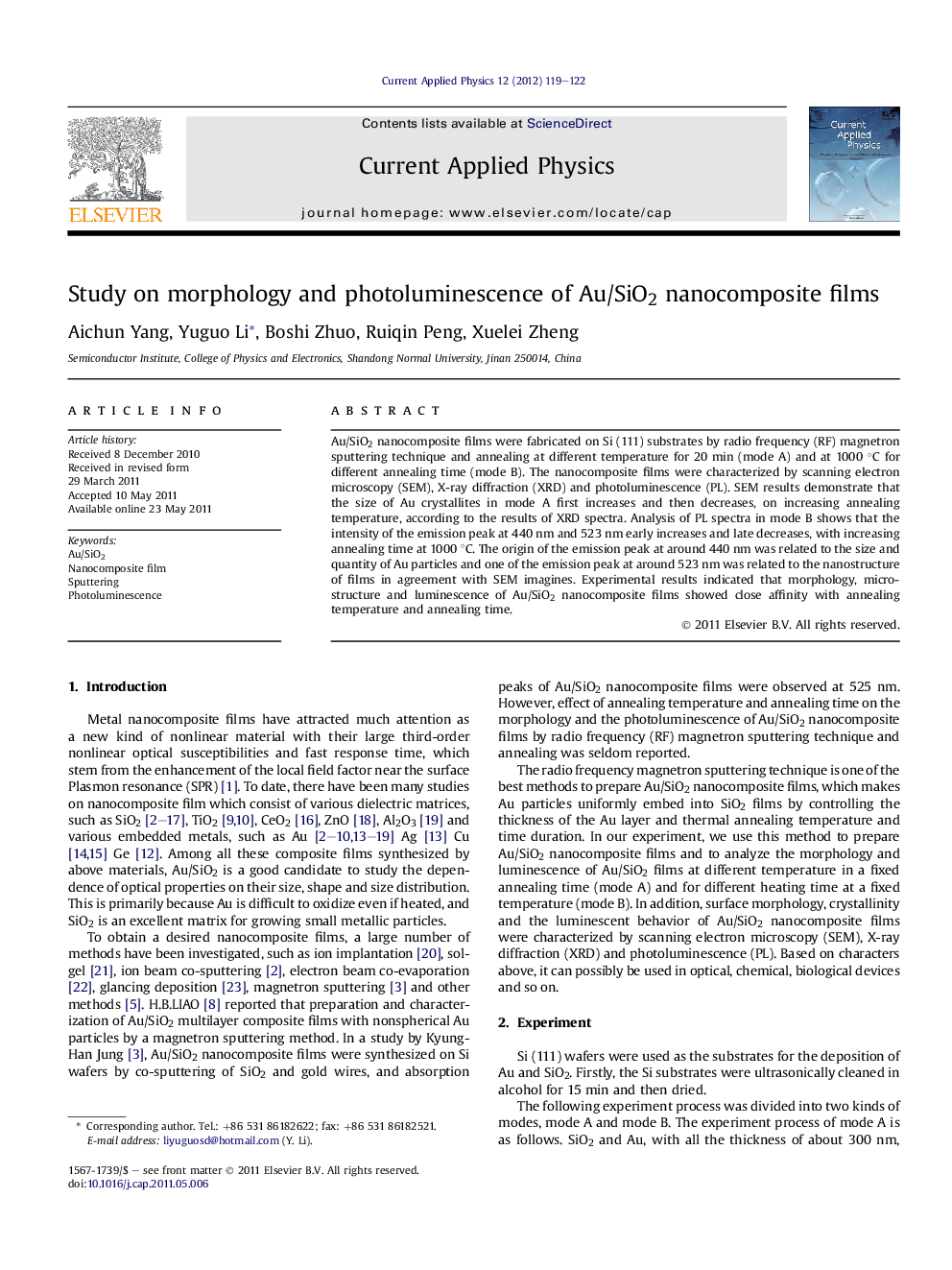| Article ID | Journal | Published Year | Pages | File Type |
|---|---|---|---|---|
| 1787009 | Current Applied Physics | 2012 | 4 Pages |
Au/SiO2 nanocomposite films were fabricated on Si (111) substrates by radio frequency (RF) magnetron sputtering technique and annealing at different temperature for 20 min (mode A) and at 1000 °C for different annealing time (mode B). The nanocomposite films were characterized by scanning electron microscopy (SEM), X-ray diffraction (XRD) and photoluminescence (PL). SEM results demonstrate that the size of Au crystallites in mode A first increases and then decreases, on increasing annealing temperature, according to the results of XRD spectra. Analysis of PL spectra in mode B shows that the intensity of the emission peak at 440 nm and 523 nm early increases and late decreases, with increasing annealing time at 1000 °C. The origin of the emission peak at around 440 nm was related to the size and quantity of Au particles and one of the emission peak at around 523 nm was related to the nanostructure of films in agreement with SEM imagines. Experimental results indicated that morphology, microstructure and luminescence of Au/SiO2 nanocomposite films showed close affinity with annealing temperature and annealing time.
► The annealing conditions have an impact on the photoluminescence of Au/SiO2 films. ► The annealing conditions also have an impact on the morphology of Au/SiO2 films. ► The size of Au cluster first increases and then decreases with annealing temperature. ► The PL peak of Au/SiO2 films first increases and then reduces with annealing time.
